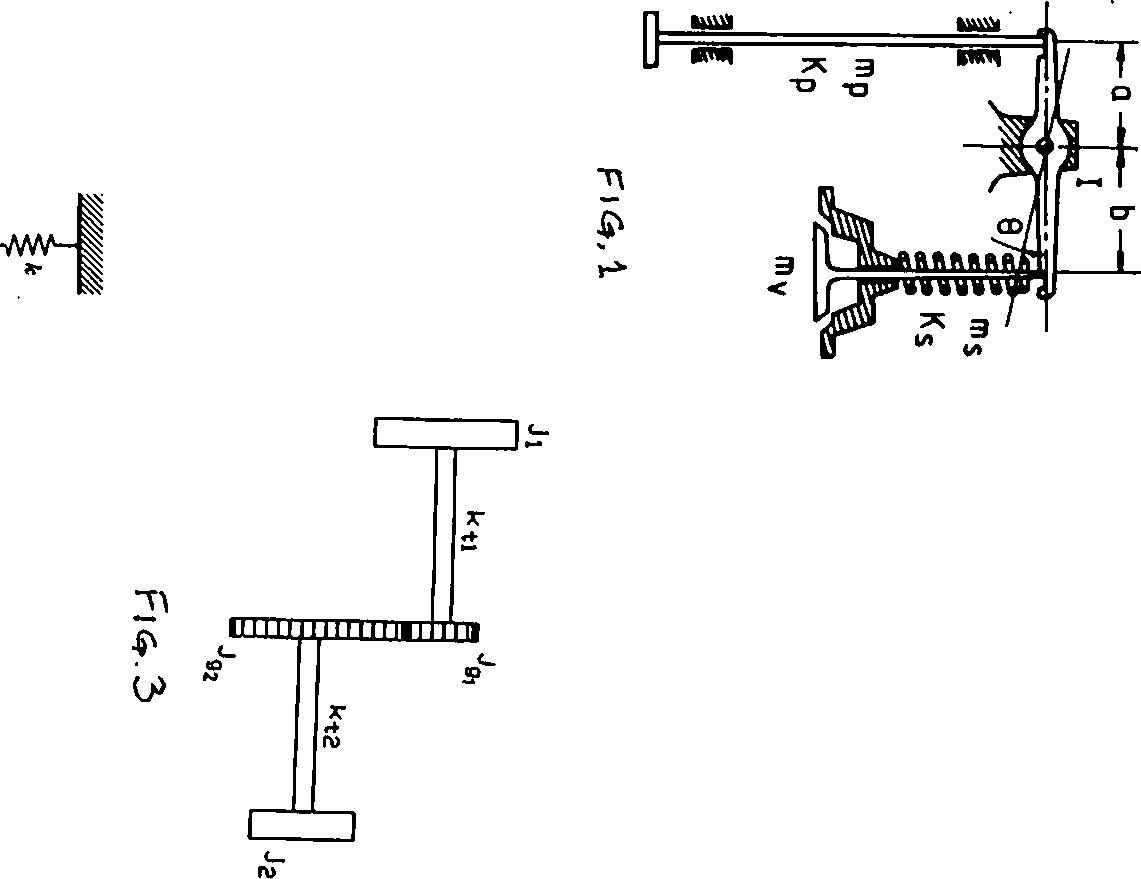Thapar University 2006 B.E Mechanical Engineering Mechanical Vibrations - Question Paper
Thapar Institute of Engineering & Technology
B.Tech Mechanical Engineering (3rd Year)
Final Term exam
ME019 (Mechanical Vibrations)
MECHANICAL ENGINEERING DEPARTMENT END SEMESTER EXAMINATION DECEMBER 2006 ME-019 MECHANICAL VIBRATIONS
Time: 3 hrs. M.Marks: 100
Note: Attempt any FIVE questions. All the parts of a question should be
attempted at one place only.
1. A push rod rocker and valve of an engine valve system is shown in fig. 1. The mass moment of inertia of the rocker about its axis is I, the masses of the valve and push rod are mv and mp, respectively. The valve spring stiffness is Ks and its mass is ms. The push rod can be replaced by a spring of equivalent stiffness Kp. Determine the natural frequency of the system in Hz, considering the rocker and valve to be rigid, and accounting for the mass of the spring and the push rod. (20)
2. A 40 kN force is applied to a structure at variable frequency and the amplitude of vibration measured to plot the frequency response. The peak amplitude is 2000 microns observed at 27.5 Hz. It was found that the frequencies at which 1415 micron amplitude occurs are 30.8 and 25 Hz. Determine, the first approx. value of the damping ratio of the system and the system parameters K,c and m. (5+5+5+5 = 20)
3. What is the secondary critical speed of a rotating shaft and when does it occur? A 55 kg compressor rotor is mounted, midway, on a vertical shaft of stiffness 1.4 x 107 N/m. Determine the critical speed of the rotor in rad/sec. assuming the bearings to be rigid (shaft supports to be considered simply supported). If the rotor has an eccentricity of 1000 micron and its operating speed is 6000 rpm, determine the amplitude of vibration in mm. The damping ratio in the system can be assumed to be 0.05. Estimate also the dynamic load coming on each bearing. (2+6+6+6 = 20)
4. Explain clearly the function of an un-damped dynamic vibration absorber. Derive the frequency equation and sketch and discuss the resonant speed Vs mass ratio plot and the dimensionless frequency response curves for the main vibrating system and the absorber system. (5+5+5+5=20)
5. Investigate the transverse vibration of a stretched string of length L in a plane, with both ends considered fixed, assuming the tension in the string remains constant. Derive the wave equation and obtain its solution by variable separable method. Write down the expression for the general solution of the system. (8+8+4 = 20)
6. a) Determine the three natural frequencies for torsional vibration of the
degenerate system shown in Fig. 2 with the help of the Holzers Tabulation method.
Assume, Ji=J2=J3=l kg-m2 and Kj=K2 = 1 N.m/rad.
Take the first trial frequency as 0.5 rad/sec. and it is known that none of the natural frequency lies above 2.0 rad/sec. Plot the remainder torque Vs frequency to obtain the solution. (14)
b) How will you obtain the natural frequency of the 2-rotor geared system shown in Fig.3, when the inertia of the gears are not negligible? Obtain the expressions for equivalent stiffness and inertia in this case. (06)
7. a) A three-degree-of-freedom spring-mass system is shown in Fig. 4, w'here all
the masses are equal to m. Draw the free-body force diagrams for the three masses and calculate the flexibility influence coefficients from these diagrams. (14)
b) Consider the system given in fig. 5. Determine the lowest natural frequency in transverse vibration using Dunkerleys method. The expressions for the influence coefficients are given below
On = <*33 = 3 L3/256 El
ctj2 Q21 = G23 = CX32 = 11 L3 / 768 El
Qu = CI31 = 7 L3 / 768 El
a22= L3 / 48 El
(06)
NOTE: Valued Answer Books can be seen on 20.12.2006 during 11.30 a.m to 1.00 p.m.

0
 |

|
Attachment: |
| Earning: Approval pending. |
